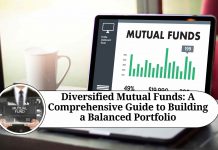High Risk Mutual Funds: Understanding the Risks and Rewards
Mutual funds are a popular investment option for many investors because they provide diversification and professional management of funds. While some mutual funds are considered safe investments with lower returns, high-risk mutual funds are designed to provide investors with the potential for higher returns but also come with a higher level of risk.
In this blog, we will discuss high-risk mutual funds and the various factors investors should consider before investing in them.
What are High-Risk Mutual Funds?
High-risk mutual funds are investment vehicles that carry a high degree of investment risk. They are typically invested in securities that are more volatile and less predictable, such as emerging market stocks, small-cap stocks, and high-yield bonds. These investments can provide higher returns but are also riskier because their value can fluctuate significantly over short periods of time.
Who Should Invest in High-Risk Mutual Funds?
High-risk mutual funds are not suitable for all investors. They are typically recommended for investors who have a high tolerance for risk and a long-term investment horizon. Investors who are close to retirement or have a short-term investment horizon may not be suitable for high-risk mutual funds because they can be subject to significant fluctuations in value over short periods of time.
Factors to Consider When Investing in High-Risk Mutual Funds
When considering investing in high-risk mutual funds, there are several factors that investors should take into account:
- Risk Tolerance: Investors must have a high-risk tolerance to invest in high-risk mutual funds. If an investor is not comfortable with taking on a high level of risk, then these funds may not be suitable.
- Investment Horizon: High-risk mutual funds are suitable for investors with a long-term investment horizon. If an investor has a short-term investment horizon, then they may not be able to ride out the ups and downs of the market.
- Fund Manager: Investors should research the fund manager’s track record and investment philosophy before investing. The fund manager’s experience, skills, and knowledge can play a significant role in the fund’s performance.
- Fees: High-risk mutual funds typically have higher fees than low-risk mutual funds. Investors should understand the fees associated with the fund and how they impact the overall return.
- Diversification: High-risk mutual funds should be part of a diversified investment portfolio. Investors should not invest all their money in one high-risk mutual fund.
The Bottom Line
High-risk mutual funds can provide investors with the potential for higher returns, but they also come with a higher level of risk. Investors should carefully consider their risk tolerance, investment horizon, the fund manager’s track record, fees, and the importance of diversification before investing in high-risk mutual funds.
Understanding the Risks of High-Risk Mutual Funds
High-risk mutual funds are not without risks. Investors must understand the potential risks associated with these funds before investing. Here are some of the risks that investors should be aware of:
- Volatility: High-risk mutual funds are invested in securities that are more volatile than those in low-risk mutual funds. This means that the value of the investments in the fund can fluctuate significantly over short periods of time.
- Market Risk: High-risk mutual funds are subject to market risk, which is the risk that the market will decline, causing the value of the fund to decrease.
- Liquidity Risk: High-risk mutual funds invest in securities that may be less liquid than those in low-risk mutual funds. This means that the fund may not be able to sell its holdings quickly, which can result in losses for investors.
- Credit Risk: High-risk mutual funds invest in securities that may be considered risky, such as high-yield bonds. This means that the fund is exposed to the risk that the issuer may default on its debt.
- Manager Risk: The performance of a high-risk mutual fund is highly dependent on the fund manager’s skills and experience. If the fund manager is not able to make the right investment decisions, the fund’s performance may suffer.
Rewards of High-Risk Mutual Funds
Despite the risks, high-risk mutual funds offer the potential for higher returns. These funds are invested in securities that are riskier but offer the potential for higher returns than those in low-risk mutual funds. Over the long-term, high-risk mutual funds have the potential to outperform low-risk mutual funds.
Investing in High-Risk Mutual Funds
Investing in high-risk mutual funds requires careful consideration. Investors should do their due diligence and research the funds they are considering. They should also seek advice from a financial advisor to determine if high-risk mutual funds are suitable for their investment goals and risk tolerance.
In addition, investors should keep in mind that high-risk mutual funds should be part of a diversified investment portfolio. Investors should not invest all their money in one high-risk mutual fund but should allocate their investments across different asset classes and investment strategies.
Conclusion
High-risk mutual funds can be a good investment option for investors with a high tolerance for risk and a long-term investment horizon. However, investors should carefully consider the potential risks associated with these funds before investing. They should also ensure that high-risk mutual funds are part of a diversified investment portfolio to reduce the overall investment risk.
Read more useful content:
- How to invest in mutual funds
- Best Technology Mutual Funds
- All about mutual funds-types & importance
- The Power of SIP Investment in Mutual Funds
Frequently Asked Questions (FAQs)
What is a high-risk mutual fund?
A high-risk mutual fund is an investment vehicle that is invested in securities that are more volatile and less predictable, such as emerging market stocks, small-cap stocks, and high-yield bonds. These investments can provide higher returns but are also riskier because their value can fluctuate significantly over short periods of time.
Are high-risk mutual funds suitable for all investors?
No, high-risk mutual funds are not suitable for all investors. They are typically recommended for investors who have a high tolerance for risk and a long-term investment horizon. Investors who are close to retirement or have a short-term investment horizon may not be suitable for high-risk mutual funds.
What factors should I consider before investing in high-risk mutual funds?
Investors should consider their risk tolerance, investment horizon, the fund manager’s track record, fees, and the importance of diversification before investing in high-risk mutual funds.
What are the potential risks associated with high-risk mutual funds?
The potential risks associated with high-risk mutual funds include volatility, market risk, liquidity risk, credit risk, and manager risk.
What are the potential rewards of high-risk mutual funds?
High-risk mutual funds offer the potential for higher returns. Over the long-term, high-risk mutual funds have the potential to outperform low-risk mutual funds.
How do I choose the right high-risk mutual fund?
Investors should research the fund manager’s track record and investment philosophy, fees, and the fund’s diversification strategy before investing. Investors should also consult with a financial advisor to determine if high-risk mutual funds are suitable for their investment goals and risk tolerance.
How much should I invest in high-risk mutual funds?
Investors should not invest all their money in one high-risk mutual fund but should allocate their investments across different asset classes and investment strategies. The amount invested in high-risk mutual funds will depend on the investor’s overall investment portfolio and investment goals.
Are high-risk mutual funds tax-efficient?
High-risk mutual funds are subject to the same tax laws as other mutual funds. Investors should consult with a tax professional to determine the tax implications of investing in high-risk mutual funds.
Can high-risk mutual funds be held in retirement accounts?
Yes, high-risk mutual funds can be held in retirement accounts, such as 401(k)s and IRAs.
How often should I review my high-risk mutual fund investments?
Investors should review their high-risk mutual fund investments periodically, at least once a year. They should also review their investments if there are any significant changes in the market or if there are any changes to their investment goals or risk tolerance.




















